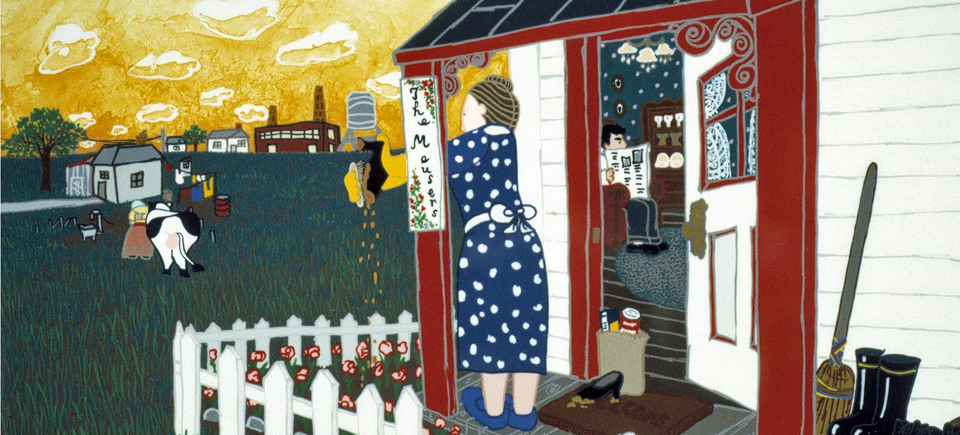
China Mission: The Story of a Great Canadian
China Mission: The Story of a Great Canadian
When one views images of life in China today, one sees a country that is highly industrialized and on its way to becoming a modern society. Yet this transition has been a long time in coming. China was, for all intents and purposes, stuck in the “middle ages” until as recently as the early 1900s; the changes it has experienced over the past 100-odd years have been cataclysmic. One man who lived through most of them was Chester Ronning, the subject of our documentary China Mission: The Chester Ronning Story. I recently spoke to the film’s director, Tom Radford, about how the film came to be.
Ronning was born in China of Norwegian missionary parents. Over the course of 90 years, he devoted a great deal of his life to sharing his knowledge of China with the Western world. He lived in China for many years and witnessed some of the country’s great upheavals. Ronning, who also lived in Alberta throughout much of his life, was at various times a cowboy, a member of the Alberta Legislature, a teacher and a diplomat, most notably serving as Canadian Ambassador to China.
The idea of documenting Ronning’s fascinating life was first broached by his daughter, New York Times photojournalist Audrey Topping. She had shot some footage of Ronning’s return to the country of his birth in 1971. She approached several producers, including the NFB, with the idea of making a film about her father’s incredible life but could not get the project off the ground. Radford was also interested in making a film on Ronning, having met him through one of his University of Alberta professors.
Radford contacted Topping and Ronning and convinced them to let him make the film. He agreed to use Topping’s 1971 footage as a starting point. By this time, the footage was with CTV, who sold it to the NFB but declined to participate any further in the project. Radford told me that he wanted to focus primarily on Ronning while telling the story of the great changes happening in China. He also wanted to highlight what Ronning had done for Alberta. The Alberta Department of Education agreed to co-produce the film, which was to be completed in time for the province’s 75th anniversary in 1980. Radford received help from legendary NFB filmmakers Colin Low and Tom Daly throughout the making of the film. He is effusive in his praise for their mentorship.
He spent a great deal of time going through the Ronning family archives, looking at photographs of Ronning’s life in China and Canada. He also found material at the Whaling Archives in Boston as well as at the Smithsonian in Washington, where he discovered 35mm footage shot in China in the early 1900s. In order to paint an accurate portrait of life in China, he decided to include disturbing images of beheadings. Radford explained to me that it was the only way to show the extremes that existed within Chinese society during Ronning’s boyhood and to illustrate the violence that the missionaries faced.
Radford shot some contemporary footage of Ronning, then in his 80s, with his family, passionately talking about China and his Chinese roots. We see here a man who has a deep connection to the country of his birth and who lives his life immersed in its culture. Though Ronning’s parents had gone to China to convert the locals to Christianity, it is clear from what Ronning has to say that China had a tremendous influence on him and his family.
When the film was completed it was sent to the CBC, who flatly refused it. Radford feels that this was because the CBC had a bias against films from Western Canada at that time. He also believes that historical documentaries were not in vogue back then.
The film was released instead directly to the non-theatrical market, premiering on April 26, 1980, at the University of Alberta theatre in Edmonton with Ronning present. The film went on a tour of Western Canada over the next few years, playing in libraries, auditoriums and community centres and receiving a terrific response. China Mission was met with strongly positive reviews from both critics and audiences. Ronning was very active in these screenings, which greatly helped in getting the film seen. Radford also told me that there was great interest in the film from the Chinese community in Canada.
After 3 years, the film was finally broadcast on CFCN, the CTV affiliate in Calgary, and on educational TV in Ontario. After Ronning’s death on December 31, 1984, the CBC bought the film and broadcast it in early January. Several international TV sales also followed, including to Germany, the Netherlands, the Discovery Channel in the US and to KCTS, the PBS station in Seattle.
The film is an incredible portrait of an incredible man. The scenes of early 20th-century China are an amazing time capsule. There is some disturbing material, to be sure, but China Mission paints a portrait of a society in the midst of great change—and of the great Canadian who witnessed it. I invite you to watch this beautifully crafted, inspirational film of another time and another place. I hope it will move you as much as it did me.
Enjoy the film.
China Mission: The Chester Ronning Story, Tom Radford, provided by the National Film Board of Canada



